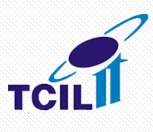Linux is the best-known and most-used open source operating system. As an operating system, Linux is software that sits underneath all of the other software on a computer, receiving requests from those programs and relaying these requests to the computer’s hardware.

Linux is the best-known and most-used open source operating system. As an operating system, Linux is software that sits underneath all of the other software on a computer, receiving requests from those programs and relaying these requests to the computer’s hardware.
Content:
TCIL-IT Chandigarh is a fastest emerging company in the IT and telecommunications industry. Being a well accredited company, we have specialized in the field of various industrial training programs.
And have been maintaining a strong foothold ever since our inception in the year 1999 with ICS, Chandigarh. Intelligent Communication Systems India Ltd. or ICSIL controls its managerial and administrative aspects.
© 2025 coursetakers.com All Rights Reserved. Terms and Conditions of use | Privacy Policy